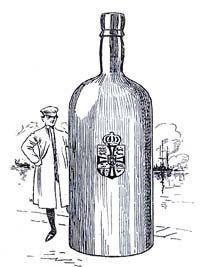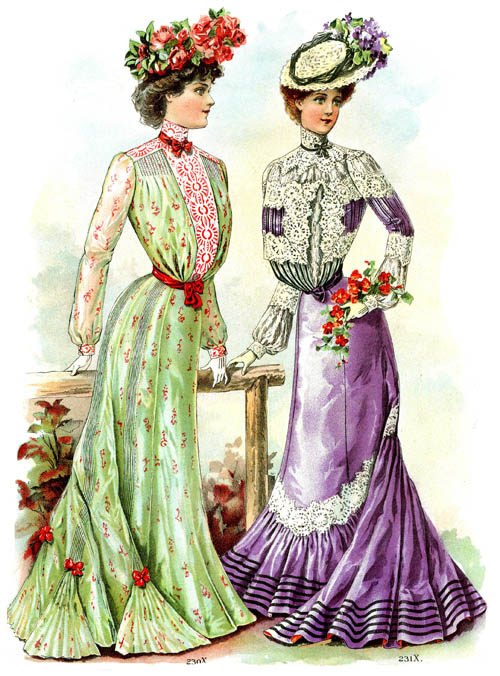|
Home > Victorian Social Issues > The Temperance Movement

|
The roots of "Prohibition" go much farther back than speakeasies and Eliot Ness. The temperance movement was very active in Victorian Britain and America. Though it began with "temperance" (moderation), it soon evolved into a move toward total abstinence or prohibition. In Britain, reformers saw alcoholism as a great destroyer of the poor and lower classes; many believed that if they could just keep folks out of the bars, a host of social problems would go away. Children were organized into "Bands of Hope" to spread the message, and Victorian newspapers and magazines abound with morality tales and poems illustrating the sad fate of the person who takes "that first drink." In America, William Jennings Demorest, publisher of Demorest Magazine, was a major campaigner for temperance, which explains the large number of temperance articles featured in that magazine.
|
- Passing the Bottle
(Leisure Hour, 1860)
- An essay on British "intemperance."
- Temperance and Provident Habits, by James Dann
(Cassell's Family Paper, 1860)
- Teetotalism
(Leisure Hour, 1868)
- The Fifth & Sixth Step in Intemperance
(Demorest, 1874)
- The Next Public House
(Cassell's Family Magazine, 1875)
- "Let us take a look inside two or three of the public-houses, taverns, 'gin-palaces,' which are to be found 'at every hand's turn' to allure the working man, the idle man, the unemployed, the over-worked, the cadger, the tippler, the confirmed drunkard."
- On the Club
(Cassell's Family Magazine, 1875)
- Efforts to establish "working-men's clubs" as alternatives to public houses.
- The Rise of Good-Templarism, by Joseph Malins
(Cassell's Family Magazine, 1875)
- On the rise of the temperance movement.
- People's Cafés
(Cassell's Family Magazine, 1876)
- Cafés established to provide a "counter-attraction to gin-palaces and public houses."
- Coffee Taverns
(Cassell's Family Magazine, 1878)
- "The object is to furnish a comfortable, cheerful place for working men to use after work or during meal times, where cheap and wholesome food can be obtained, and where newspapers and periodicals can be seen: in a word, to give them light, warmth, and comfort--without gin."
- Coffee Taverns and the Temperance Movement
(Cassell's Family Magazine, 1879)
- [Joseph Livesey] The Father of Teetolism, by Rev. Frederic Wagstaff
(Cassell's Family Magazine, 1882)
- Dr. Johnson on the Temperance Question, by Edward Bradbury
(Cassell's Family Magazine, 1883)
- Should Early Closing Be Made Compulsory? (Reader debate)
(Cassell's Family Magazine, 1883)
- Temperance and Prohibition
(Century Magazine, 1883B)
- This series of editorials and open letters from 1883-1897 brings you the Century's coverage of the question of temperance, teetotalism and outright prohibition.
- The Prohibition Convention
(Demorest, 1885)
- Temperance Articles in Demorest
- 1886 • 1887 • 1888 • 1889 • 1894
- Scientific Temperance
(Cassell's Family Magazine, 1888)
- An Interview with Dr. Benjamin Ward Richardson
- The Temperance Question in India, by John Hurst
(Century Magazine, 1889B)
- On the Stump for the Pump, by Sir Wilfrid Lawson
(The Strand, 1891A)
- The author discusses his 30 years of "stumping" for the temperance movement.
- Wine on Fashionable Tables (Ladies' Home Journal, 1892)
- This compendium of articles and letters addresses the question of whether the use of wine at fashionable events is decreasing.
- How to Manage a Band of Hope, by Linda Gardiner
(Girl's Own Paper, 1896)
- A "Band of Hope" is designed to teach children about temperance.
- The Great European Drinking Contest, by W. Greenwood
(Sunday Strand, 1902)
- Comparing British alcohol consumption to the rest of Europe.
- The Phantoms at John Bull's Feast, by W. Greenwood
(Sunday Strand, 1902)
- A temperance argument with statistics on alcohol consumption and the costs to the state of alcoholism.
- • See also Help for the Working Man
|
Visit Our Victorian Shop
for:
Books
Coloring Books
Beautiful Spiral Journals
Holiday Greeting Cards
|
|


 Discover thousands of Victorian images in our
Discover thousands of Victorian images in our 